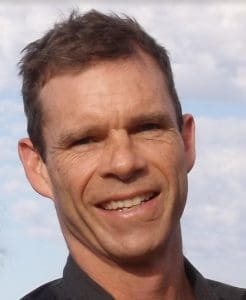
SCAA secretary Jason Letchford
SEVERAL wool industry workers are among the New Zealanders who have used the new NZ-New South Wales trans-Tasman COVID-19 bubble to work in Australia’s eastern states.
The arrival of the New Zealanders late last week, many of whom caught connecting flights into Victoria, Tasmania and Western Australia has caught some of the state’s by surprise, especially Victoria, creating friction with the Federal Government.
Victorian Premier Daniel Andrews said today the Department of Health and Human Service had “door-knocked” 55 of the 65 people from New Zealand who had flown into Melbourne from Sydney.
He said there were 17 flights into Melbourne today that could possibly have NZ travellers on board.
He maintained today that the state was not part of the trans-Tasman bubble, but said the state would not be quarantining people “from a low-virus community.”
“WE just have to make the best of this.”
Shearing Contractors Association of Australia secretary Jason Letchford said he estimated dozens of shearers and wool handlers might utilise the trans-Tasman bubble to return to Australia for work.
“But I think it is more of a trickle than a flood at this stage,” he said.
“It will be helpful but it certainly won’t be the nirvana of a solution that we would like it to be.”
Despite the friction between the states and the Federal Government over the development, Mr Letchford said the NZ expatriates were doing nothing illegal. It has been estimated that about 480 NZ-born shearers and wool handlers have been unable to return to Australia due to COVID-19 travel restrictions.
Mt Lethford said he had worked to facilitate the return of the New Zealand workers to Australia and even one shearer could help alleviate the current shortage, especially in Victoria where shearing activity will increase leading up to Christmas.
“I was pleased to heat that they were coming and were doing what they were doing and following the rules.”
He said any NZ workers disembarking in Melbourne would need to have a permit from their prospective employee to travel from the airport to their worksite.
“That’s what the process asked for and that’s the process that anyone who did come or who will be coming, will be following.”
Mr Letchford said the requirements for the workers’ entry into states varied. Victoria required a permit from the employer to move from the metropolitan area to regional areas with no quarantine period and South Australia required a quarantine period and an essential worker permit. Those landing in Western Australia also had to do a two-week quarantine.
Although the trans-Tasman bubble has eliminated the COVID-19 costs for NZ workers coming to Australia – up to A$8000 per worker — Mr Letchford said they also had to have no commitment with a NZ contractor to work later in the year because of the NZ$3100 quarantine accommodation and meals cost to return to New Zealand.
One western Victorian contractor said he knew of two of his workers – a shearer and a wool handler – who had returned late last week.
“I would say there will be a few more,” he said.
The contractor said up until now it has been too expensive for the NZ workers to come and it would have involved costly period of isolating.
“Now that they can come back without isolating there will be few more coming over I would say.
“There are a lot ready to come, it’s just that this lot were guinea pigs to see if they were going to let them through,” he said.
The contractor had been down 10-12 shearer and wool handlers during the pandemic.
“Other contractors are in a similar situation and probably worse.”
The contactor said he has booked up other workers from northern Victoria and interstate to make up for the shortfall of NZ workers.
“I wasn’t actually short of shearers, I was short of wool handlers.
“Most of the contractors were short of wool handlers and that’s why they couldn’t put shearers on,” he said.
“It’s the wool handlers that we are really short of.”
The contractor said the demand for shearers and wool handlers would increase with increased shearing up to Christmas.
“We’re OK in October, it’s in November and December where everyone will suffer, because everyone wants to shear then.”



HAVE YOUR SAY